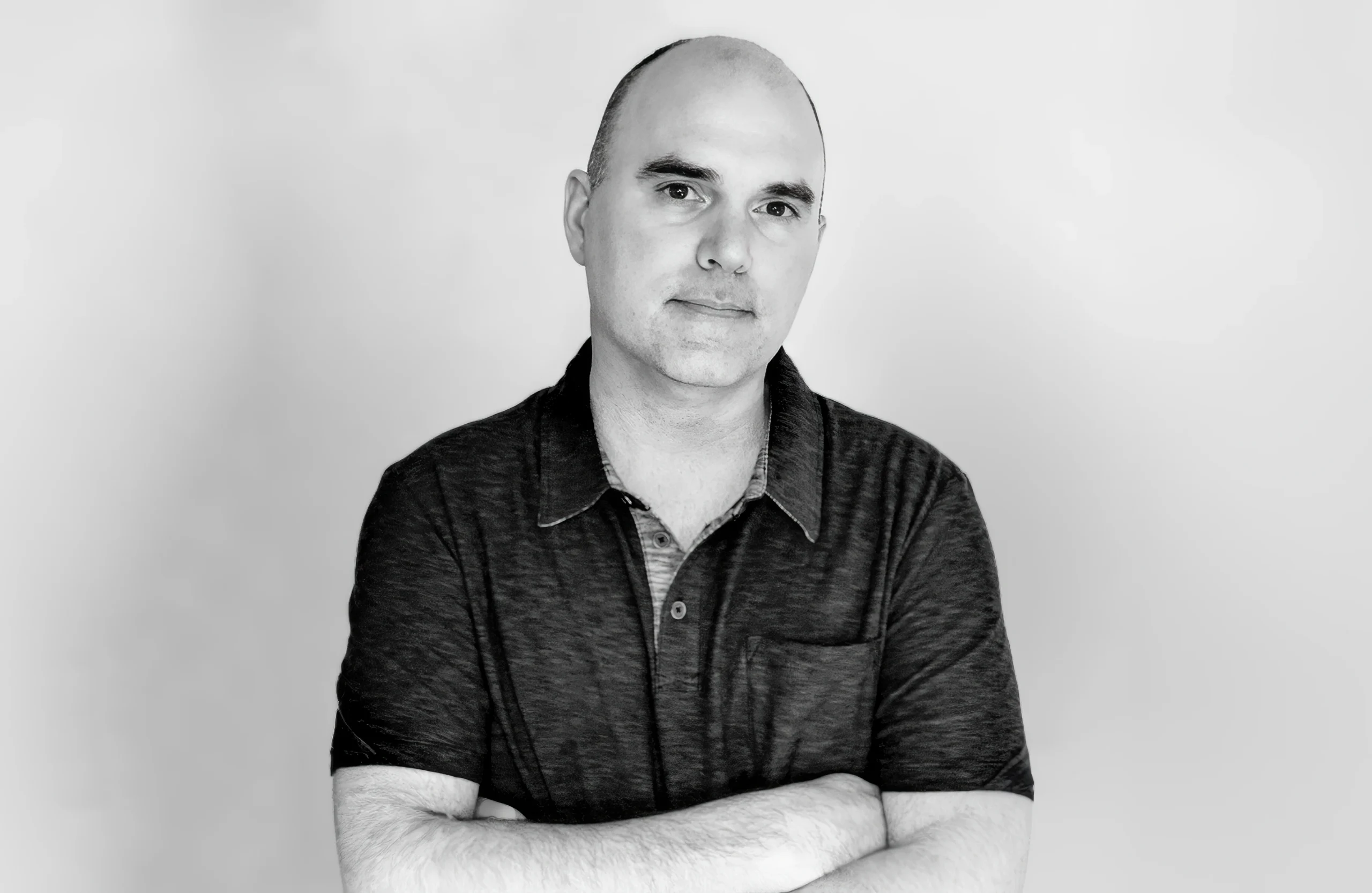Everyone’s worried about being replaced by AI. Meanwhile, I’m watching designers, marketers, and devs triple their rates because of it.
The 18,347% spike in AI demand isn’t theoretical—it’s my inbox.
I know because I’m the one hiring them.
The view from inside the hiring chaos
Here’s what kills me. I get calls from CEOs panicking about AI replacing their entire workforce. Same call, ten minutes later, they’re begging me to find someone who knows how to use AI properly.
The disconnect is wild.
Last week, a client told me they’re implementing a “prove AI can’t do your job” policy. Straight out of the Shopify playbook. They want every department to justify new hires by showing why AI can’t handle the work.
Then they asked if I could find them three AI-savvy marketers.
Stop it. Do you not hear yourself?
And it’s not just one company. Fiverr’s CEO told Business Insider he won’t hire anyone who hasn’t already used AI. Duolingo replaced contract workers with AI and launched 148 new courses. Everyone’s following this playbook.
BTW – the irony of these announcements is killing me. They’re creating the exact talent shortage they’re complaining about.
The panic calls vs reality
I’m getting the same three calls every week now.
Call #1: “Should we freeze all hiring until we figure out the AI thing?”
Call #2: “Our competitors are using AI. We need to catch up. Can you find us someone?”
Usually the same client. Same week. Sometimes same conversation.
Call #3: “We tried to use AI internally. It didn’t work. We need an expert.”
Translation: They gave ChatGPT to their team with no training, no strategy, and no use cases. Of course it didn’t work. That’s like handing someone Photoshop and expecting them to become a designer.
Here’s the thing. These aren’t small companies. These are established businesses with real budgets, and they’re completely lost.
The salary negotiations are what really opened my eyes. I had a designer ask for 40% more than the role typically paid.
The number stopped me cold.
Then they showed me their portfolio. Same quality work, delivered in one-third the time. Client loved it. They got the rate.
This isn’t an anomaly. It’s the new normal.
And you wonder why some professionals are thriving while others are updating their resumes in panic mode?
Dead giveaways you’re playing defense (not offense)
I can spot who’s going to struggle in about 30 seconds of looking at their application. Here’s what instantly catches my attention:
| Red Flags | Green Flags |
| Waiting for your manager to suggest AI tools | Reduced content production time by 70% using AI workflow” |
| Listing “prompt engineering” as a skill without results | “Launched 3 AI-assisted campaigns that outperformed traditional by 2x” |
| Avoiding AI entirely to “keep things human” | Portfolio showing before/after AI amplification |
| Adding ChatGPT to your skills like it’s Microsoft Word | Specific examples of AI multiplication in action |
| “Open to learning AI” in your cover letter | Already using AI to deliver exceptional results |
The difference? One group talks about knowing tools. The other shows how they multiply value.
The amplification test that changed how I hire
I got tired of guessing who could actually deliver on their AI promises. So I started running an experiment.
Same brief to every candidate. Design a landing page for a SaaS product. Traditional tools allowed for one group. Any AI assistance for the other.
The results made me completely rethink how I evaluate talent.
| Metric | Traditional Approach | AI-Amplified | Impact |
| Time to Complete | 8 hours | 2.5 hours | 3.2x faster |
| Variations Delivered | 3 concepts | 12 concepts | 4x options |
| Revision Rounds | 2-3 typical | 1 typical | 50% fewer |
| Client Satisfaction | “Good work” | “How did you do this?” | Memorable |
But here’s what the table doesn’t show.
The best performer wasn’t some 22-year-old “AI native.” It was a designer with 10 years of experience who’d spent the last three months learning to amplify their skills with AI.
They knew what good design looked like. They understood user psychology. They just used AI to explore more options faster.
The pure “AI specialists” who applied? Their work was technically competent but soulless. All speed, no judgment.
Believe me when I say this – expertise plus AI beats AI expertise every single time.
What businesses actually want (translation guide)
Let me decode what companies really mean when they make these announcements.
“Prove AI can’t do your job” = Show me the 20% of your work that requires human judgment
“AI-first hiring policy” = We’re scared of falling behind competitors
“Must have AI experience” = Know how to use tools to multiply your output
“Eliminating positions” = Combining 3 roles into 1 AI-amplified position
I had a Fortune 500 exec tell me off the record: “We’re not really eliminating jobs. We’re eliminating job descriptions. The work still needs human judgment. We just need fewer humans doing more.”
That’s the reality nobody wants to say publicly.
The career risk nobody’s talking about
In 18 months, saying “I don’t use AI” will sound like saying “I don’t use email” did in 2005.
Not using AI won’t make you “more human” or “authentic.” It’ll make you unemployable.
Think about it. We don’t celebrate people who refuse to use email or spreadsheets. We see them as liabilities.
Here’s the thing. Every client I work with has moved from “should we use AI?” to “why aren’t we using AI faster?”
The shift happened seemingly overnight. One day they’re skeptical. Next day they’re behind.
I watched a $50M company lose three major accounts because their competitor started delivering work twice as fast using AI. The quality was comparable. The speed wasn’t.
A creative director I know was passed up for a promotion after years at the company. Not because they lacked talent, but because their team lead said: “We need someone who can 10x with AI.”
The resistance window is closing. Fast.
The opportunity map (where the 18,347% lives)
After placing hundreds of people, I see three distinct zones emerging in the job market.
Zone 1: AI Elimination (yes, these jobs are toast)
- Basic data entry
- Simple content rewrites
- Repetitive design tasks
- First-draft anything without strategy
If your job is mostly Zone 1, you have maybe 12 months to pivot.
Zone 2: AI Amplification (where the opportunity explodes)
- Strategic thinking + AI execution
- Creative direction + AI production
- Analysis + AI data processing
- Human insight + AI scale
This is where that 18,347% spike lives. Real humans using AI to deliver exceptional results.
Zone 3: Human-Only (smaller than you think)
- Final creative decisions
- Relationship building
- Complex problem solving
- Ethical judgments
Everyone thinks they’re in Zone 3. Most aren’t.
Stop focusing on Zone 3. Stop trying to prove you’re irreplaceable. Start building your Zone 2 skills.
The money isn’t in competing with AI. It’s in dancing with it.
Your competitive advantage playbook
I’m watching people transform their careers in 30 days. Not by becoming AI experts. By becoming AI-amplified professionals.
Here’s exactly how the successful ones do it.
Week 1: Audit your amplification potential
List your top 5 daily tasks. Actually write them down.
Test AI tools on each one. Claude for writing. Midjourney for visuals. ChatGPT for analysis. Whatever fits your field.
Document time and quality differences. Be honest about the results.
Find your multiplication zones. Tasks where AI makes you 3-5x more effective.
Week 2: Build proof points
Pick one process to transform completely. Make it your showcase.
Document the before state. Time, output, quality, everything.
Build your AI-amplified workflow. Test, refine, optimize.
Create comparison examples. Show the multiplication effect clearly.
Week 3: Position your new value
Update LinkedIn with specific AI achievements. Not “knows ChatGPT.” Real metrics.
Revise your resume with amplification stories. “Increased output 300% using AI workflow” beats “proficient in AI tools.”
Build a portfolio showing your leverage. Before/after examples. Time savings. Quality improvements.
Practice your “here’s how I use AI” story until it’s natural.
Week 4: Test your market value
Apply to stretch positions that seemed out of reach before.
Quote 25-40% higher rates on freelance projects.
Negotiate current role expansion based on new capabilities.
Watch what happens. The market response will shock you.
The Monday morning move
Stop defending against AI. Start building with it.
That 18,347% spike? Those are smart professionals who figured out the game changed. They’re not competing with AI. They’re competing with people who refuse to use it.
I’m literally watching people triple their rates by adding AI to their existing expertise.
A copywriter I placed last month went from $75/hour to $200/hour. Same skills. Added AI. Delivers 5x faster with better results.
A developer doubled their salary by showing how they use AI to ship features in days, not weeks.
A marketer got promoted twice in six months by using AI to run campaigns that would’ve required a team of five.
And you wonder why some people are panicking while others are cashing in?
The question isn’t whether AI will change your job. It’s whether you’ll be the one setting new rate cards or updating your resume.
Your move.
Here’s what I’d do if I were you: Block 2 hours this week. Pick your most time-consuming task. Test three AI tools on it. Document the results. That’s your first amplification proof point.
Start there. Build from there. The 18,347% opportunity is waiting.
And next time someone says AI will replace you? Show them what AI plus you can do.




